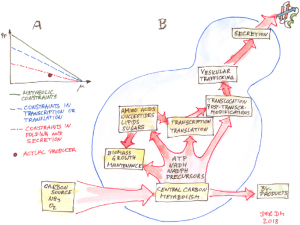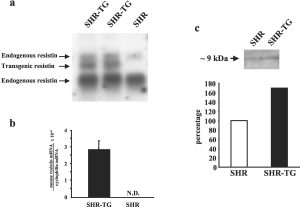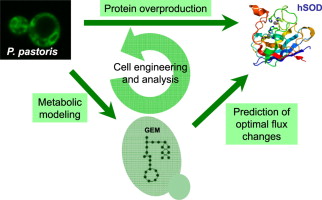Abstract
Strong expression of recombinant proteins in bacteria affects primary carbon and energy metabolism, resulting in growth inhibition and acetate formation. By applying glucose pulses to batch fermentations performed for the production of a heterologous (alpha-glucosidase in Escherichia coli), we show that induction of the recombinant gene strongly inhibits maximal specific glucose uptake capacities and respiration capacity.
The accumulation of glucose in the fermentation medium promotes the growth of plasmid-free cells. These inhibition effects are well described by including the kinetics of product formation in a recently published dynamic model (Lin et al. [2001] Biotechnol Bioeng 73:349-357). The new model also includes population characteristics and provides a good fit to measured data describing growth, production, substrate consumption, by-product formation, and respiration.

What is cellular ageing?
Ageing is the process of getting older. In general terms, the term especially refers to humans, many animals, and fungi. Cellular ageing is the result of physical and chemical insults, molecular exhaustion, and physiological attempts to compensate for the damage. Examples include toxic adducts to macromolecules, chromosome attrition, DNA damage, and organelle damage.
The mechanism of ageing and metabolism recombinants
Metabolic changes are hallmarks of ageing, and genetic and pharmacological alterations of relevant pathways can prolong life. Among these pathways, the fundamental theory of ageing is ROS. ROS, also known as reactive oxygen species, are byproducts of the respiratory chain in the inner mitochondrial membrane, where redox reactions create a proton gradient that drives ATP generation. Superoxide radicals are produced by complex (I) and complex (III) of the respiratory chain.

Three scavenging mechanisms (including superoxide dismutase [(SOD), mitochondria and cytosol], catalase (peroxisome), and glutathione peroxidase (mitochondria and cytosol)) act gradually to remove these radicals. First, SOD detoxifies superoxide and creates hydrogen peroxide. This intermediate can form the more dangerous hydroxyl radical if not removed. Catalase and glutathione peroxidase prevent the formation of hydroxyl radicals by converting hydrogen peroxide to water. Increased SOD activity without changes in catalase or glutathione peroxidase can be harmful due to the accumulation of harmful hydroxyl radicals.
Increased ROS production through desynchronized respiration or decreased ROS scavenging capacity with age offers an attractive model to explain the damage to proteins through carbonylation or to DNA through guanine modifications. Due to their proximity to the respiratory chain, mitochondrial proteins and mitochondrial DNA that lack protective nucleosomes are especially prone to damage.

